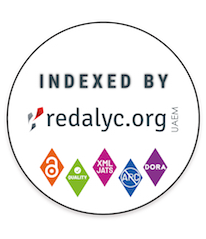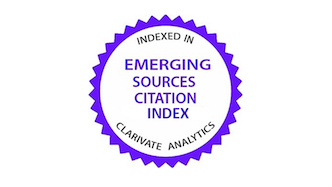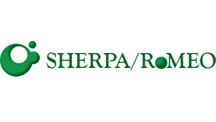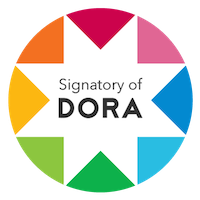Endophytic fungi associated with Vitis vinifera with antibiosis capacity against Botrytis cinerea
DOI:
https://doi.org/10.15517/am.2024.56193Keywords:
antagonism, metabolites, mold, biocontrolAbstract
Introduction. Endophytic fungi (EF) in grapevines (Vitis vinifera) have great potential for agricultural applications and may represent possible biological control agents for vineyards. Objective. To isolate and identify endophytic fungi (EF) from grapevine plants with antibiosis capacity against Botrytis cinerea. Materials and methods. Young and mature branches from forty healthy grapevine plants were collected from seven production lots in the Cañete province, Lima, Peru, during March to May 2022. EF isolation was performed on 702 sections of disinfected tissues using potato dextrose agar (PDA) culture medium, and identification was carried out at the genus level. Secondary metabolites were extracted from twenty-eight EF strains to determine the mycelial inhibition of the pathogen. An analysis of variance (ANOVA) was conducted on the evaluated parameters using the Minitab statistical program. Results. A total of 129 EF strains were isolated from leaves and stems of young and mature grapevine branches, encompassing seven genera (Trichoderma, Aspergillus, Alternaria, Cladosporium, Fusarium, Nigrospora, and Stemphylium). The highest frequency was found in leaves and mature branches. Trichoderma and Alternaria were the most frecuent genera in grapevine plants, with 22.48 % and 21.71%, respectively. Metabolites obtained from the EFVH-01 strain of the genus Cladosporium, and EF-99 and EF-70 strains of the genus Alternaria, had the greatest effect on mycelial inhibition of the pathogen. Conclusions. Strains of endophytic fungi from the genera Cladosporium
and Alternaria showed antibiosis capacity against Botrytis cinerea at the laboratory scale, which could potential biocontrol agents of pathogens in grapevine cultivation.
Downloads
References
Aleynova, O. A., Nityagovsky, N. N., Suprun, A. R., Ananev, A. A., Dubrovina, A. S., & Kiselev, K. V. (2022). The diversity of fungal endophytes from wild grape Vitis amurensis Rupr. Plants, 11(21), Article 2897. https://doi.org/10.3390/plants11212897
Abdelaziz, A. M., El-Wakil, D. A., Attia, M. S., Ali, O. M., AbdElgawad, H., & Hashem, A. H. (2022). Inhibition of Aspergillus flavus growth and aflatoxin production in Zea mays L. using endophytic Aspergillus fumigatus. Journal of Fungi, 8(5), Article. 482. https://doi.org/10.3390/jof8050482
Barnett, H. L., & Hunter, B. B. (1998). Illustrated genera of imperfect fungi (4th ed.). Macmillan Publishing Company.
Barron, G. L. (1968). The genera of Hyphomycetes from soil. The Williams and Wilkins Co.
Brakhage, A. A. (2013). Regulation of fungal secondary metabolism. Nature Reviews Microbiology, 11(1), 21–32. https://doi.org/10.1038/nrmicro2916
Busby, P., Ridout, M., & Newcombe, G. (2016). Fungal endophytes: Modifiers of plant disease. Plant Molecular Biology Review, 90, 645–655. https://doi.org/10.1007/s11103-015-0412-0
Casieri, L., Hofstetter, V., Viret, O., & Gindro, K. (2009). Fungal communities living in the wood of different cultivars of young Vitis vinifera plants. Phytopathologia Mediterranea, 48(1), 73–83. https://oajournals.fupress.net/index.php/pm/article/view/5268
Cosoveanu, A., Gimenez-Mariño, C., Cabrera, Y., Hernandez, G., & Cabrera, R. (2014). Endophytic fungi from grapevine cultivars in Canary Islands and their activity against phytopatogenic fungi. International Journal of Agriculture and Crop Sciences, 7(15), 1497-1503.
De Miccolis Angelini, R. M., Rotolo, C., Masiello, M., Gerin, D., Pollastro, S., & Faretra, F. (2014). Occurrence of fungicide resistance in populations of Botryotinia fuckeliana (Botrytis cinerea) on table grape and strawberry in southern Italy. Pest Management Science, 70(12), 1785–1796. https://doi.org/10.1002/ps.3711
De Sousa Leite, T., Cnossen-Fassoni, A., Liparini Pereira, O., Mizubuti Gomide, E., Fernandes de Araújo, E., & Vieira de Queiroz, M. (2013). Novel and highly diverse fungal endophytes in soybean revealed by the consortium of two different techniques. Journal of Microbiology, 51(1), 56–69. https://doi.org/10.1007/s12275-013-2356-x
Deyett, E., & Rolshausen, P. E. (2020). Endophytic microbial assemblage in grapevine. FEMS Microbiology Ecology, 96(5), Article fiaa053. https://doi.org/10.1093/femsec/fiaa053
Di Rienzo, J. A., Casanoves, F., Balzarini, M. G., Gonzalez, L., Tablada, M., & Robledo, C. W. (2008). InfoStat software estadistico, Manual del Usuario: Vol. Grupo Infostat (1.1). Universidad Nacional de Córdoba.
El-Sayed, A. S. A., & Ali, G. S. (2020). Aspergillus flavipes is a novel efficient biocontrol agent of Phytophthora parasitica. Biological Control, 140, Article 104072. https://doi.org/10.1016/j.biocontrol.2019.104072
Fan, Y., Gao, L., Chang, P., & Li, Z. (2020). Endophytic fungal community in grape is correlated to foliar age and domestication. Annals of Microbiology, 70(1), Article 30. https://doi.org/10.1186/s13213-020-01574-9
Feijó de Lima, T. E., & da Silva Cavalcanti, M. (2014). Fungos endófitos e do filoplano de Caesalpinia echinata Lam da estação ecológica de Tapacurá, PE. Agrotrópica, 26(1), 43–50. https://www.gov.br/agricultura/pt-br/assuntos/ceplac/publicacoes/revista-agrotropica/artigos/2014-DOI-10.21757/0103-3816-2014v26n1p43-50.pdf
Gomes Fernandes, E., Liparini Pereira, O., Cânedo da Silva, C., Pereira Bento, C. B., & Vieira de Queiroz, M. (2015). Diversity of endophytic fungi in Glycine max. Microbiological Research, 181, 84–92. https://doi.org/10.1016/j.micres.2015.05.010
González, V., & Tello, M. L. (2011). The endophytic mycota associated with Vitis vinifera in central Spain. Fungal Diversity, 47(1), 29–42. https://doi.org/10.1007/s13225-010-0073-x
Halo, B. A., Al-Yahyai, R. A., & Al-Sadi, A. M. (2021). Biological control of - Pythium aphanidermatum induced cucumber and radish damping-off by an endophytic fungus, Cladosporium omanense isolate 31R. Biocontrol science and technology, 31(3), 235–251. https://doi.org/10.1080/09583157.2020.1844148
Kecskeméti, E., Berkelmann-Löhnertz, B., & Reineke, A. (2016). Are Epiphytic microbial communities in the carposphere of ripening grape clusters (Vitis vinifera L.) different between conventional, organic, and biodynamic grapes? PLoS ONE, 11(8), Article e0160852. https://doi.org/10.1371/journal.pone.0160852
Kernaghan, G., Mayerhofer, M., & Griffin, A. (2017). Fungal endophytes of wild and hybrid Vitis leaves and their potential for vineyard biocontrol. Canadian Journal of Microbiology, 63(7), 583–595. https://doi.org/10.1139/cjm-2016-0740
Kouipou Toghueo, R. M., Eke, P., Zabalgogeazcoa, Í., Rodríguez Vázquez de Aldana, B., Wakam Nana, L., & Fekam Boyom, F. (2016). Biocontrol and growth enhancement potential of two endophytic Trichoderma spp. from Terminalia catappa against the causative agent of common bean root rot (Fusarium solani). Biological Control, 96, 8–20. https://doi.org/10.1016/j.biocontrol.2016.01.008
Larran, S., Mónaco, C., & Alippi, H. E. (2000). Endophytic fungi in beet (Beta vulgaris var. esculenta L.) leaves. Advances in Horticultural Science, 14(4), 193–196. https://www.jstor.org/stable/42883275
Leon-Ttacca, B., Yactayo-Yataco, R. J., Astete-Farfán, A., Mattos-Calderón, L. L., & Arestegui-Cantoral, J. C. (2022). A Antibiosis y micoparasitismode hongos endófitos sobre el agente causal del moho gris delarándano (Botrytis cinerea). Bioagro, 34(2), 209–220. http://www.doi.org/10.51372/bioagro343.1
Li, Z., Chang, P., Gao, L., & Wang, X. (2020). The endophytic fungus Albifimbria verrucaria from wild grape as an antagonist of Botrytis cinerea and other grape pathogens. Phytopathology®, 110(4), 843–850. https://doi.org/10.1094/PHYTO-09-19-0347-R
Li, Z.-J., Shen, X.-Y., & Hou, C.-L. (2016). Fungal endophytes of South China blueberry (Vaccinium dunalianum var. Urophyllum). Letters in Applied Microbiology, 63(6), 482–487. https://doi.org/10.1111/lam.12673
López-González, R. C., Gómez-Cornelio, S., De la Rosa-García, S. C., Garrido, E., Oropeza-Mariano, O., Heil, M., & Partida-Martínez, L. P. (2017). The age of lima bean leaves influences the richness and diversity of the endophytic fungal community, but not the antagonistic effect of endophytes against Colletotrichum lindemuthianum. Fungal Ecology, 26, 1–10. https://doi.org/10.1016/j.funeco.2016.11.004
Lou, J., Fu, L., Peng, Y., & Zhou, L. (2013). Metabolites from Alternaria fungi and their bioactivities. Molecules, 18(5), 5891–5935. https://doi.org/10.3390/molecules18055891
Lugtenberg, B. J. J., Caradus, J. R., & Johnson, L. J. (2016). Fungal endophytes for sustainable crop production. FEMS Microbiology Ecology, 92(12), Article fiw194. https://doi.org/10.1093/femsec/fiw194
Musetti, R., Vecchione, A., Stringher, L., Borselli, S., Zulini, L., Marzani, C., D’Ambrosio, M., di Toppi, L. S., & Pertot, I. (2006). Inhibition of sporulation and ultrastructural alterations of grapevine downy mildew by the endophytic fungus Alternaria alternata. Phytopathology®, 96(7), 689–698. https://doi.org/10.1094/PHYTO-96-0689
Pancher, M., Ceol, M., Corneo, P. E., Longa, C. M. O., Yousaf, S., Pertot, I., & Campisano, A. (2012). Fungal endophytic communities in grapevines (Vitis vinifera L.) respond to crop management. Applied and Environmental Microbiology, 78(12), 4308–4317. https://doi.org/10.1128/AEM.07655-11
Reis Varanda, C. M., Oliveira, M., Materatski, P., Landum, M., Esteves Clara, M. I., & Félix, M. do R. (2016). Fungal endophytic communities associated to the phyllosphere of grapevine cultivars under different types of management. Fungal Biology, 120(12), 1525–1536. https://doi.org/10.1016/j.funbio.2016.08.002
Russo, M. L., Pelizza, S. A., Cabello, M. N., Stenglein, S. A., Vianna, M. F., & Scorsetti, A. C. (2016). Endophytic fungi from selected varieties of soybean (Glycine max L. Merr.) and corn (Zea mays L.) grown in an agricultural area of Argentina. Revista Argentina de Microbiología, 48(2), 154–160. https://doi.org/10.1016/j.ram.2015.11.006
Sadeghi, F., Samsampour, D., Seyahooei, M. A., Bagheri, A., & Soltani, J. (2019). Diversity and spatiotemporal distribution of fungal endophytes associated with Citrus reticulata cv. Siyahoo. Current Microbiology, 76(3), 279–289. https://doi.org/10.1007/s00284-019-01632-9
Sánchez-Fernández, E. R., Sánchez-Ortiz, L. B., Sandoval-Espinosa, M. Y. K., Ulloa-Benítez, Á., Armendáriz-Guillén, B., García-Méndez, C. M., & Macías-Rubalcava, L. M. (2013). Hongos endófitos: Fuente potencial de metabolitos secundarios bioactivos con utilidad en agricultura y medicina. Revista Especializada en Ciencias Químico-Biológicas, 16(2), 132–146. https://doi.org/10.1016/S1405-888X(13)72084-9
Shankar Mane, R., Milaap Paarakh, P., & Basapps Vedamurthy, A. (2018). Brief review on fungal endophytes. International Journal of Secondary Metabolite, 5(4), 288–303. https://doi.org/10.21448/ijsm.482798
Sharma, I., & Sharma, A. (2014). Use of Alternaria spp. as a pest control agent: A Review. World Applied Sciences Journal, 11(31), 1869–1872.
Stranska, M., Dzuman, Z., Prusova, N., Behner, A., Kolouchova, I., Lovecka, P., Rezanka, T., Kolarik, M., & Hajslova, J. (2022). Fungal endophytes of Vitis vinifera—Plant growth promoters or potentially toxinogenic agents? Toxins, 14(2), Article 66. https://doi.org/10.3390/toxins14020066
Watanabe, T. (2002). Pictorial atlas of soil and seed fungi: Morphologies of cultured fungi and key to species (2nd ed.). CRC PRESS.
Zhao, J. H., Zhang, Y. L., Wang, L. W., Wang, J. Y., & Zhang, C. L. (2012). Bioactive secondary metabolites from Nigrospora sp. LLGLM003, an endophytic fungus of the medicinal plant Moringa oleifera Lam. World Journal of Microbiology and Biotechnology, 28(5), 2107–2112. https://doi.org/10.1007/s11274-012-1015-4
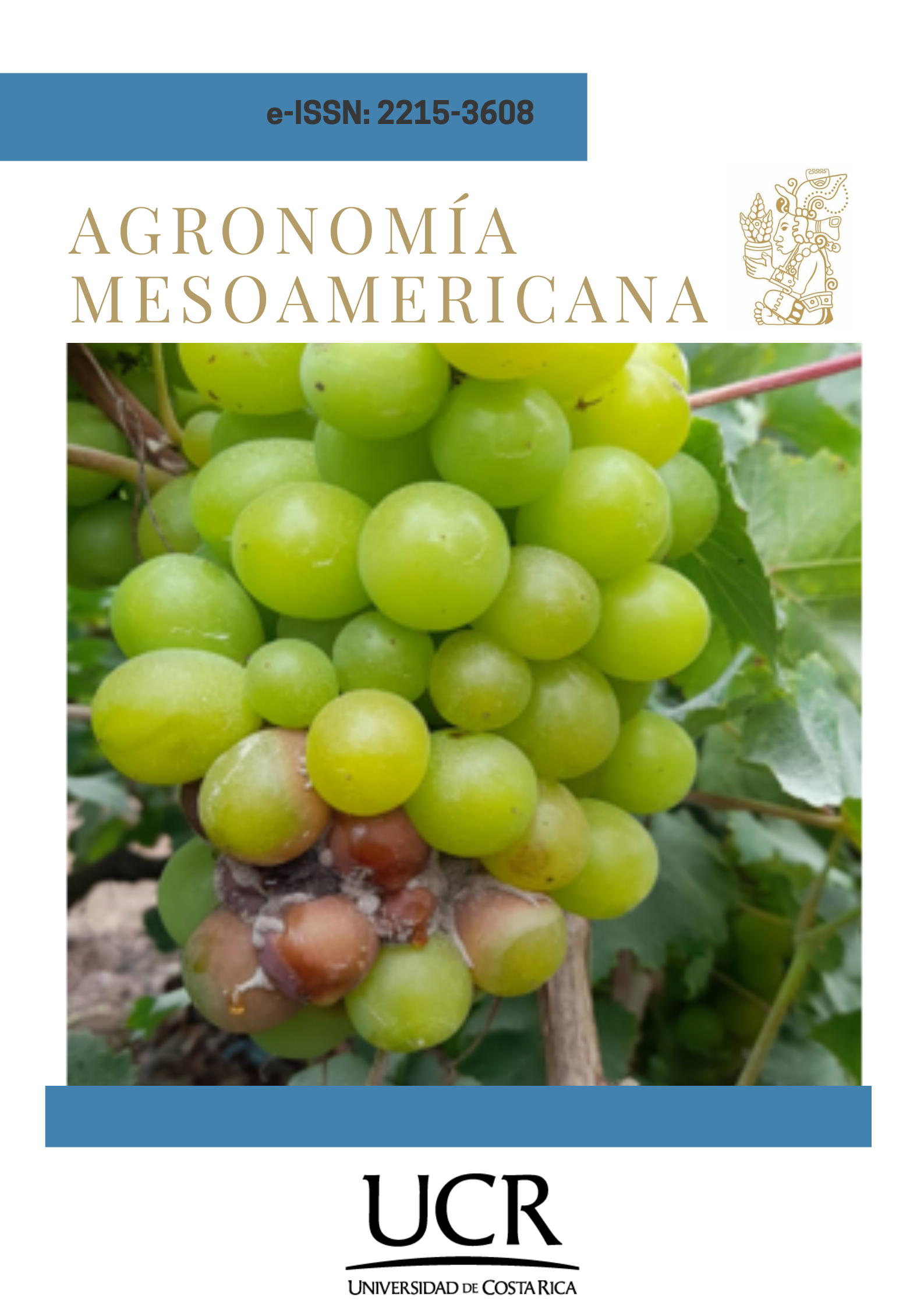
Additional Files
Published
How to Cite
Issue
Section
License
Copyright (c) 2024 Betsabe León-Ttacca, Juan Alca-Zavala, Jefferson Rosas-Martínez, Eddy Robles-Perez, Paola Zamudio-Eustaquio, Luis García-Díaz

This work is licensed under a Creative Commons Attribution-NonCommercial-NoDerivatives 4.0 International License.
1. Proposed policy for open access journals
Authors who publish in this journal accept the following conditions:
a. Authors retain the copyright and assign to the journal the right to the first publication, with the work registered under the attribution, non-commercial and no-derivative license from Creative Commons, which allows third parties to use what has been published as long as they mention the authorship of the work and upon first publication in this journal, the work may not be used for commercial purposes and the publications may not be used to remix, transform or create another work.
b. Authors may enter into additional independent contractual arrangements for the non-exclusive distribution of the version of the article published in this journal (e.g., including it in an institutional repository or publishing it in a book) provided that they clearly indicate that the work was first published in this journal.
c. Authors are permitted and encouraged to publish their work on the Internet (e.g. on institutional or personal pages) before and during the review and publication process, as it may lead to productive exchanges and faster and wider dissemination of published work (see The Effect of Open Access).





